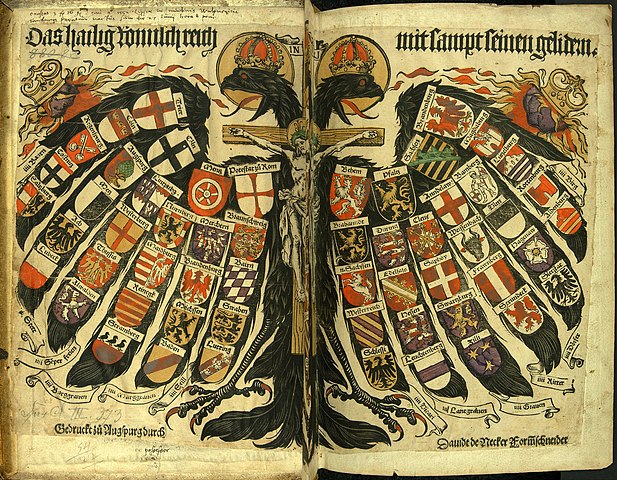
The Holy Roman Empire, often deemed a paradoxical entity, was a multi-ethnic complex of territories in Western, Central and Southern Europe that developed during the Early Middle Ages and continued until its dissolution in 1806 during the Napoleonic Wars. Despite the anachronistic association with Rome, the Empire was a distinctly European polity that emerged in the 10th century, encompassing a broad spectrum of cultures, languages, and territories.
The Origins
The Holy Roman Empire’s origins date back to the coronation of Charlemagne, the king of the Franks, as Roman emperor by Pope Leo III on Christmas Day, 800. This act reinstated the Western Roman Empire, albeit in a transmuted form, with a Frankish king as its emperor.
The Empire as we now recognize it, however, did not crystallize until the reign of Otto I in the 10th century. Otto was crowned Emperor by Pope John XII in 962, a turning point often used to denote the formal commencement of the Holy Roman Empire, initially known as the ‘Roman Empire’.
The Structure
The Empire was neither a centralized state nor a nation in the modern sense. It was a loose federation of semi-autonomous territories, including kingdoms, duchies, principalities, free cities, and ecclesiastical states. The Empire’s political structure was intrinsically linked with feudalism, a hierarchical system of political and military relationships prevalent during the Middle Ages.
The ruler of the Empire, known as the Emperor, held a position of considerable but not absolute power. Beginning with the Golden Bull of 1356, the Emperor was elected by a group of the most influential rulers within the Empire, known as Prince-electors. The Emperor’s authority was balanced by the rights and privileges of other potentates, including the Church, free cities, and territorial princes.
The Role of the Church
The association of the Empire with the Church was key to its conception and existence. The title ‘Holy’ was first officially used in 1157, under Frederick I Barbarossa. It denoted the Empire’s special position as the secular arm of the Western Church and its task of defending Christendom.
The Church played a critical role, given its cultural, spiritual, and political influence in the Middle Ages. Bishops and archbishops held vast territories within the Empire and were among the most powerful princes. The Emperor was crowned by the Pope, symbolizing the alliance and occasional contention between the secular and ecclesiastical authorities.
The Evolution and Dissolution
The Holy Roman Empire underwent significant changes over its millennium-long existence. By the 15th century, it was largely a Germanic entity, leading to the additional moniker of the ‘Holy Roman Empire of the German Nation’.
Its political and military clout began to decline in the late Middle Ages, exacerbated by the Protestant Reformation in the 16th century, which led to religious wars and the fragmentation of Christendom. By the time of the Peace of Westphalia in 1648, which ended the Thirty Years’ War, the Empire had transitioned to a decentralized entity where individual states had considerable sovereignty.
The final blow came with the rise of Napoleon Bonaparte. The Holy Roman Empire was formally dissolved in 1806, when Emperor Francis II abdicated the imperial throne and established the Austrian Empire in response to Napoleon’s creation of the Confederation of the Rhine, a French satellite federation.
The Holy Roman Empire was a unique political entity in the tapestry of European history. Its complex structure, its alliance with the Church, and its capacity to endure through centuries of dramatic change are testaments to its unique character. Despite its eventual dissolution, the Holy Roman Empire left an indelible mark on the landscape of Europe, significantly shaping its political, cultural, and religious contours. In its mosaic of territories, we can discern the early outlines of many modern European nations.
Related articles:
Lost German Kingdoms: Forgotten States and Their Cultural Influence
The History and Meaning of German Coat of Arms and National Symbols
The German Witch Hunts: A Dark Chapter in European History
Early History of Germany
German History Timeline
– The Merovingian Dynasty, ca. 500-751
– The Saxon Dynasty, 919-1024
– The Salian Dynasty, 1024-1125
– The Hohenstaufen Dynasty, 1138-1254
– The Empire under the Early Habsburgs
